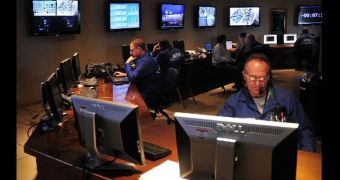The American space agency is moving forward with plans to construct its next-generation rocket, the Space Launch System (SLS). In a series of new tests, engineers were able to validate the avionics systems that will control the delivery system's solid rocket boosters.
This heavy-lift rocket will be the largest and most massive since the Saturn V that took the Apollo crews to the Moon. In its top configuration, it will be able to carry up to 130 metric tons of cargo to Earth's orbit.
It is also a hybrid between the ARES I and ARES V delivery systems, which were proposed (and subsequently canceled) under Project Constellation. After the project was scraped, NASA moved on to combine the two designs in a single vehicle.
The first versions of the SLS – scheduled to start undergoing flight tests as early as 2017 – will be able to carry between 70 and 100 metric tons of cargo to orbit. By outfitting it with smaller payloads and more fuel, the American space agency will use it to explore a near-Earth asteroid and the planet Mars.
The SLS will also be able to ferry the Orion Multi-Purpose Crew Vehicle (MPCV) to space. This capsule is a stripped-down version of the original design proposed under Project Constellation.
Most of the new rocket is based on tried-and-true designs taken from the boosters and external fuel tanks used by the Space Shuttle Program. However, all systems have been upgraded, included the avionics, and the recent tests show that the improvements work as planned.
The solid rocket boosters are used to augment the thrust capacity of the delivery system's main engines. The avionics systems control how booster thrust power and angles are handled during ascent.
Completing these tests on time is a milestone for NASA. The agency plans to conduct the first qualification tests of the new, five-segment SLS booster next spring, and a lot of work remains to be done until then.
“We were pleased to see how the avionics system functioned outside the lab. This test provides an insightful first look at how the booster thrust vector control system will operate and interface with flight hardware,” says Todd May, quoted by Space Fellowship.
The official is the SLS program manager at the NASA Marshall Space Flight Center (MSFC), in Huntsville, Alabama.

 14 DAY TRIAL //
14 DAY TRIAL //